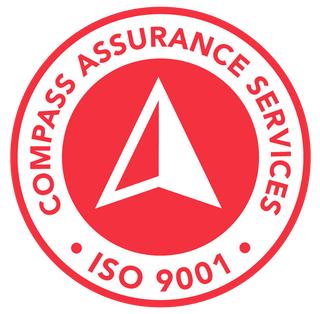Magnet Coatings

NICKEL (Ni+Cu+Ni)
This coating is most commonly used for Neodymium magnets (Rare Earth). Three layers in total -- of nickel, then copper, and a final layer of nickel -- encase the Magnetic material to create a smooth, shiny finish and give conditional protection to the alloy compound inside. Nickel coatings are suitable for indoor use and for applications requiring low friction or good response to shear forces. Nickel coatings do not have long term resistance to moisture exposure or marine environments.
You can browse our Nickel coated magnets here.
ZINC (Zn)
Zinc coatings offer higher resistance to corrosion than Nickel coatings and are ideal for situations in which magnets are subjected to prolonged exposure to water or for outdoor use in general. Zinc coatings have a silvery matte or dull finish and over time will develop an oxidized protective barrier between the magnetic material and the environment, reducing corrosion and increasing the magnet's longevity. Zinc also provides high resistance to abrasion and scratching. Zinc coated Neodymium magnets are used in motors and the automotive industry.
You can browse our Zinc coated Magnets here.
GOLD (Ni+Cu+Ni+Au)
Magnets with gold colored coatings are smooth and aesthetically attractive. They are often used in art, fashion, decorative displays and advertising. Gold coatings are slightly more expensive since it requires an extra layer over the standard Nickel coating. Gold is a very conductive material and also has excellent water resistance properties. Magnets with Gold coatings are not resistant to abrasion or scratching so should not be used outdoors. Jewelry makers and therapeutic health practitioners also find them appealing alternatives to nickel because of their gold appearance.
You can find our Gold coated magnets here.
BLACK EPOXY (Ni+Cu+Ni+BE)
Black Epoxy coatings have excellent resistance to moisture, humidity and submersion. Epoxy can easily scratch and expose the underlying Nickel coating, causing it to rust and corrode prematurely. Ideally, magnets with epoxy coatings should be permanently fixed and not repositioned frequently. This glossy black coating is attractive for making displays or outdoor signage or when long term water exposure is problematic.
See our Black Epoxy coated magnets here.
RAW EPOXY (BE)
This coating does not have underlying coats of Nickel or Copper and can only be achieved by special order from our factory. Contact our office for a quote or further information.
PLASTIC (ABS)
Injection molding allows the regular magnet coating to be encased with plastic (ABS) creating an almost unbreakable protective cover between the magnet and a ferrous metallic surface. Moisture cannot permeate the plastic seal, greatly increasing the life of the magnet and saving money. The Plastic Coating is thick and therefore reduces the actual magnetic pull force due to the extra space created between the surfaces. Plastic coating allows the attachment and removal from delicate surfaces without scratching or chipping, eliminating problems associated with abrasion, moisture and collision. The table above shows their superiority in nearly all applications, including when glue is used as an adhesive.
TEFLON (PTFE)
Almost as efficient as Plastic coating, Teflon coating has attributes useful in hospitality, medical, chemical engineering and laboratory fields. Not much adheres to the surface encasing the magnet which is ideal in scientific or facilities where contamination must be avoided. As with all Teflon coated objects, friction is greatly reduced allowing the encased magnet to slip or be repositioned with minimal shear force while retaining its strong holding ability. As with Plastic coating, Teflon provides a waterproof seal for the magnetic compound within, so exposure to weather or water is not a problem. Teflon also provides protection for delicate surfaces and stops damage from collision. Although not many things adhere to Teflon, this does include glues and epoxy, so other fixing methods must be employed. Teflon coated magnets are often used by makers of clothing, bags and luggage for closures.
Find our Teflon coated magnets here.
SANTOPRENE RUBBER MAGNETS
Rubber coated magnets are ideal for holding or creating an attachment system for non-metallic materials. Rubber coatings offer protection to both the magnet and the surface to which they are attached. This can be beneficial where painted metal surfaces are involved.
Other advantages include increased resistance to slippage or dislodgement due to sheer forces and increased protection from corrosion and collision damage which are the main causes of magnet failure. Rubber protects the magnet and ensures its reliable and consistent operation over time. Applications include closures or latches for metal gates or doors where an ordinary magnet would break or attachment of signage to painted metal surfaces using the male thread and a nut. Timber or acrylic sheeting can be fixed to metal window frames to provide temporary protective or safety screens. Likewise, brackets or footings can be attached to the male thread to make any object attach to steel. Rubber coated magnets protect surfaces from scratching or damage, especially where repeated relocation or removal occurs.






